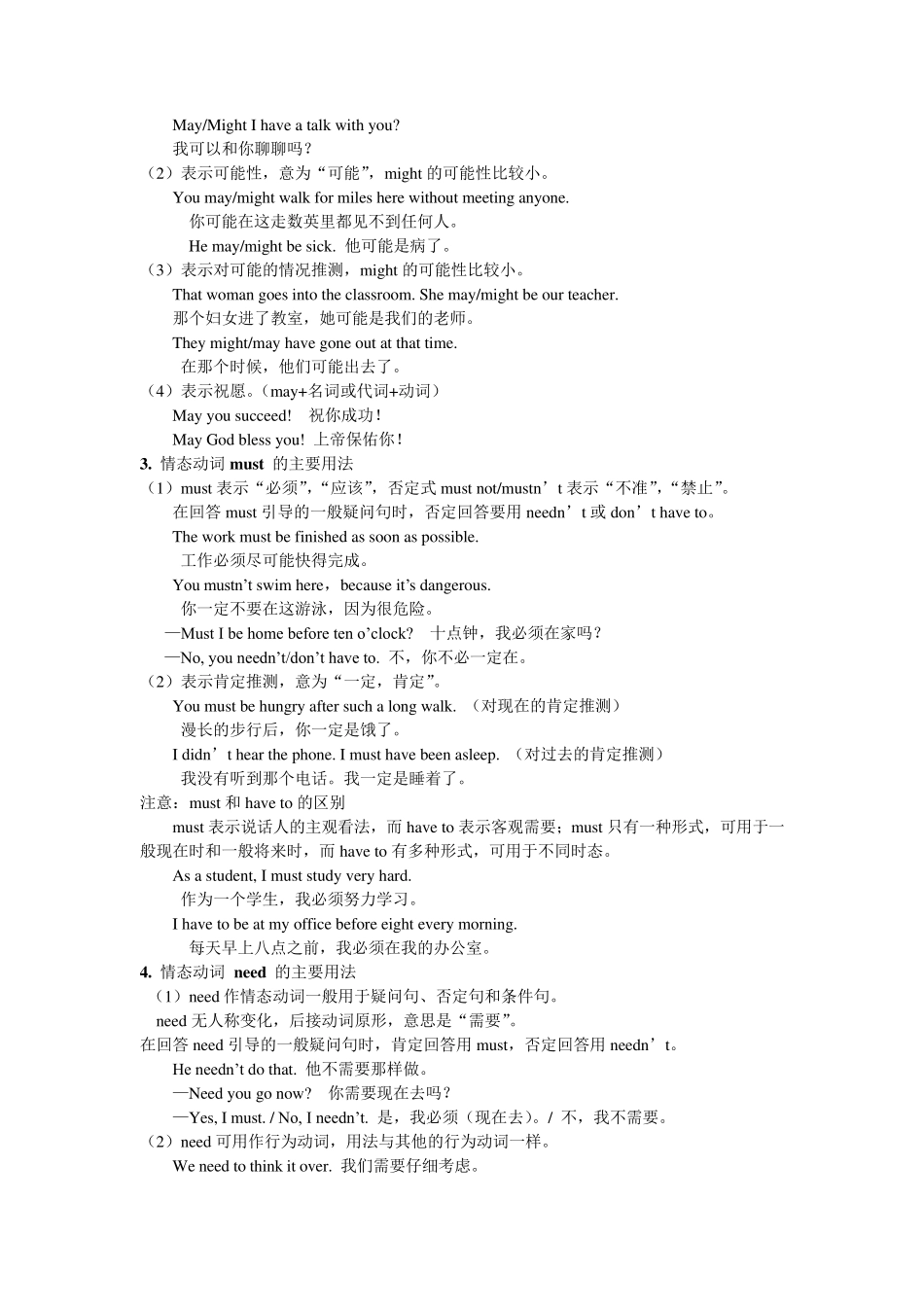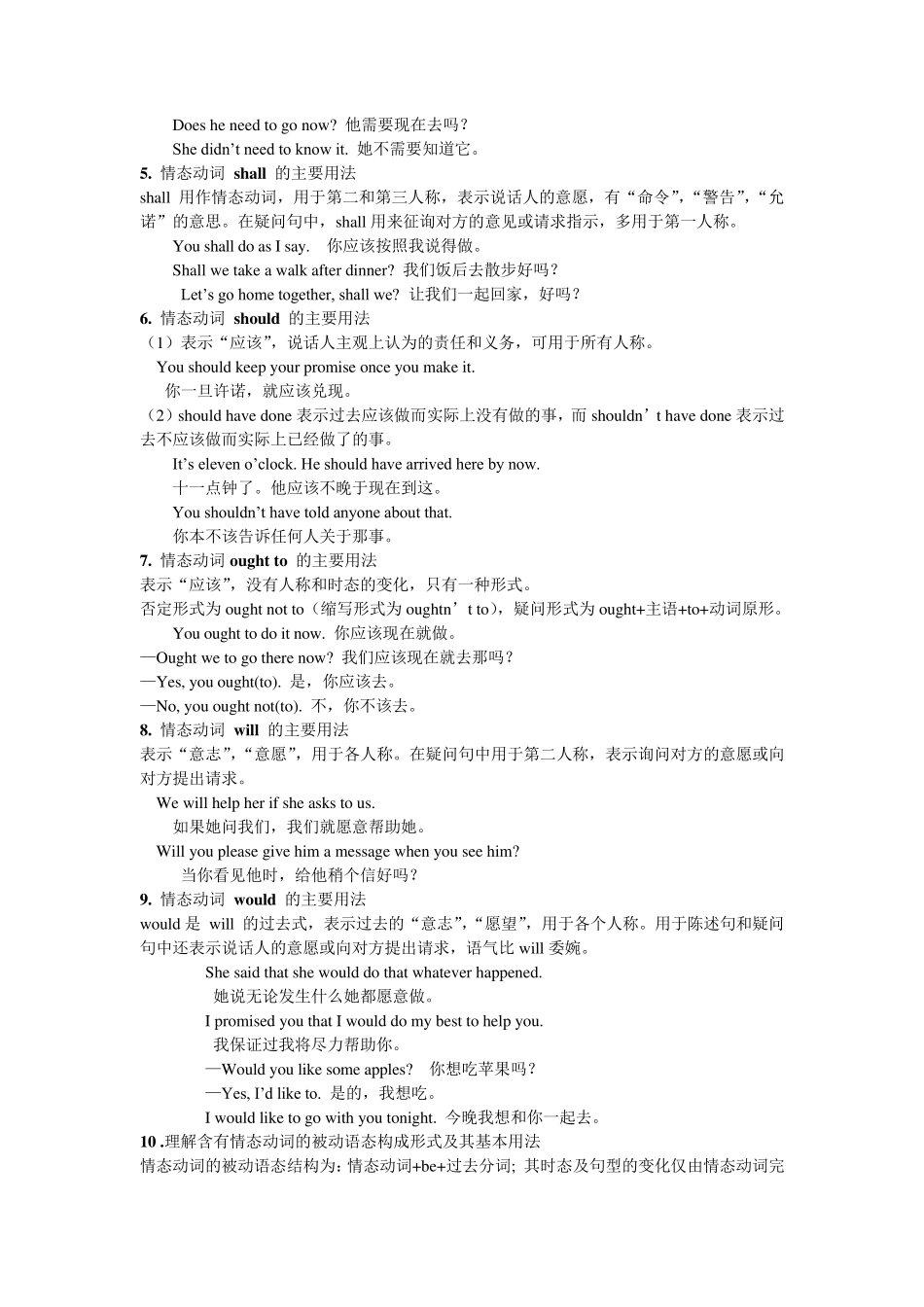情态动词的用法 【用法讲解】 考试要求: 中考要求掌握情态动词在一般疑问句的问与答,理解情态动词表示猜测的用法及情态动词的被动语态应用。 情态动词表示说话人对某一动作或状态的态度,认为“可能” ,“应该” 或“必要” 等。情态动词本身词义不完全,不能独立作谓语动词,必须和动词原形连用(ought 除外)。情态动词没有人称和单复数的变化。常用情态动词有 can(could), may(might), must, ought to, have to, need, dare, shall(should), will(would)。 1. 情态动词 can 和 could 的主要用法 (1)表示能力,意为“能,会” 。 Can you swim? 你能游泳吗? His granny is over eighty but still can read without glasses. 他的奶奶虽然八十多岁了, 但是仍旧不用戴眼镜能够阅读。 注意:can 和 be able to 表示“能力” 时的区别: can 只有现在式和过去式两种形式,而 be able to 除了现在式和过去式,还有将来式和完成式等多种形式。 She will be able to help you tomorrow afternoon. 明天下午她将能帮助你。 This is the information that I have been able to get so far. 这是我到目前为止能得到的信息。 (2)表示“许可,允许” 。 can 和 could 没有时态上的区别,could 比can 在语气上更客气;在回答 could 引导的一般疑问句时要用 can。 Could/Can you tell me the way to the railway station? 你能告诉我去火车站的路吗? —Could I use your pen? 我可以用你的钢笔吗? —Yes, of course you can. 是,当然你可以。 (3)表示“可能” ,can 多用于否定句和疑问句。 We know that a computer can’t think for itself. 我们知道计算机不可能自己思考。 Can she still be alive after all these years? 这些年过后,她仍旧可能活着吗? (4)表示否定推测,意为“不可能” 。 The shy boy can’t be our monitor. (对现在情况的否定推测) 那个腼腆的男孩不可能是我们的班长。 The ground is dry. It can’t have rained. (对过去情况的否定推测) 地面是干的,不可能下过雨。 2. 情态动词 may 和 might 的主要用法 (1)表示许可,意为“可以”。 might 比may语气上更客气,更委婉。在回答 may和 might 引导的一般疑问句时,肯定回答用...


